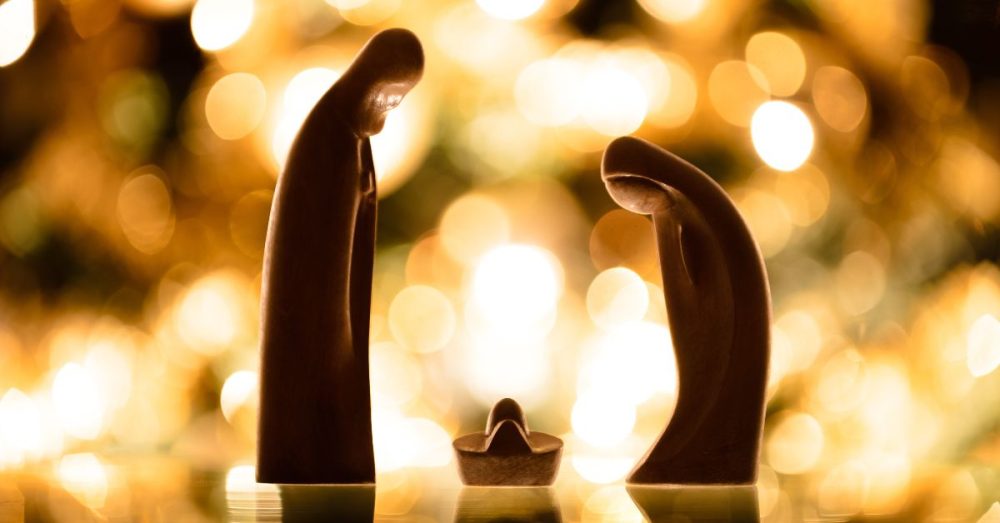On December 25, the majority of the world’s largest religious group will unite to celebrate the birth of Jesus Christ.
Protestants and Catholics, the largest Christian sects, celebrate Christmas in December, while the Orthodox celebrate the beginning of Christ’s life in early January.
While there are many differences between each Christian denomination and the ways they worship on the most important date in the Christian calendar, it is worth reflecting on the long road that brought Christmas into being.
During the conversion of Europe in late antiquity and the early medieval period, there were numerous Pagan cults throughout Europe and countless pagans that needed to be brought into the Christian fold. Rather, than cleanse celebrations and destroy pagan imagery, early Christians chose to co-opt antecedent Pagan holidays and rework them with a Christian twist.
The Roman festival of Saturnalia and the winter solstice celebrations of northern Europe were two holidays Christians used as their templates to create the modern-day Christmas
Saturnalia and the Roman Context
Saturnalia, a festival dedicated to Saturn, the Roman god of agriculture, was celebrated in December and marked a period of revelry, gift-giving, and feasting. The festival’s emphasis on goodwill and the exchange of gifts resonates with modern Christmas traditions. During Saturnalia, social norms were often inverted: slaves were treated to banquets, and the roles of master and servant were temporarily reversed. This spirit of communal joy and the cessation of social divisions likely influenced early Christian celebrations.
When Christianity gained prominence in the Roman Empire, the Church sought to replace pagan festivals with Christian holidays. December 25 was eventually chosen to mark the birth of Christ, partly to provide a Christian alternative to Saturnalia and the celebration of Sol Invictus, a Roman sun god whose feast day fell on the same date. Early Christian leaders, including Pope Julius I, are thought to have played a role in formalizing December 25 as the date for Christmas in AD 336. This strategic decision helped Christianity gain acceptance among populations accustomed to Pagan winter celebrations.
Northern European Influences
In northern Europe, pagan traditions surrounding the winter solstice also contributed to the development of Christmas imagery and customs.
For many Germanic and Norse peoples, the winter solstice was celebrated with evergreens, which symbolized life in the dead of winter. These trees were used to decorate homes and eventually became the basis of the modern Christmas tree.
The Yule log, another symbol of northern European paganism, was burned to celebrate the solstice. Historians disagree about whether the modern Yule log is connected to a flaming hunk of wood from yesteryear.
However, it is worth noting that in either case, the word Yule in modern times conjures more images of Jesus-themed singing Christmas carols than any extinct pagan holiday.
No matter what the origin of the Yule log is, it is widely embraced as one of the coziest Christmas traditions.
Saints and the Transformation of Pagan Practices
Several saints played pivotal roles in transforming pagan holidays into Christian ones. St. Boniface, a missionary to the Germanic peoples in the 8th century, is credited with promoting the use of fir trees as a Christian symbol. According to legend, Boniface cut down a sacred oak tree dedicated to Thor and pointed to a nearby fir tree as a representation of Christ’s eternal life.
“For this is the birth-night of the white Christ, the son of the All-Father, the Saviour of mankind. Fairer is he than Baldur the Beautiful, greater than Odin the Wine, kinder than Freya the Good. Since he has come sacrifice is ended. The dark Thor, on whom ye have vainly called, is dead. Deep in the shades of Niffelheim he is lost forever. And now on this Christ-night ye shall begin to live,” he allegedly said.
Then he turned his axe to the tree and proclaimed, “This Blood-tree shall darken your land no more. In the name of the Lord I will destroy it.”
The legend goes that the wood of this tree was later used to construct an early German church. At some point, the legend says that Boniface would contrast the oak with an evergreen fir, which he compared to Christ, thus introducing the tree to the Christian tradition.
St. Nicholas of Myra, a 4th-century bishop known for his generosity, became a central figure in the evolution of Christmas. His acts of charity, such as providing dowries for impoverished women, laid the groundwork for the modern figure of Santa Claus. Over time, St. Nicholas’ feast day on December 6 merged with Christmas celebrations, further blending Christian traditions.
Nearly 7 decades after Constantine legalized the practice of Christianity, Emperor Theodosius I issued the Edict of Thessalonica, which made Christianity the official religion of the Roman Empire and defined it according to a set standard of orthodoxies. The edict established a safe haven for Christendom while furthering the spread of Christmas.
A United Christendom
The lives of countless saints and missionaries were spent bringing Europe, and eventually the entire West, together in faith and under one winter tradition.
Their lives and stories may never be known but their work lives on today as it has been passed from one generation of Christian hands to another in the form of the modern Christmas.
While the Puritans and Presbyterians view or viewed these adaptations as diluting the religious essence of Christmas and object to the selection of December 25th as Christ’s birthday (as no specific day was noted in the Bible for Christ’s birth), the modern Christmas symbolizes (for better or worse) the work of previous Christians to spread the faith no matter what day a holiday was celebrated on.
As we move toward the 2,025th year of the Christian Era, let us celebrate Christ’s Mass by remembering Him and striving to continue His work.


